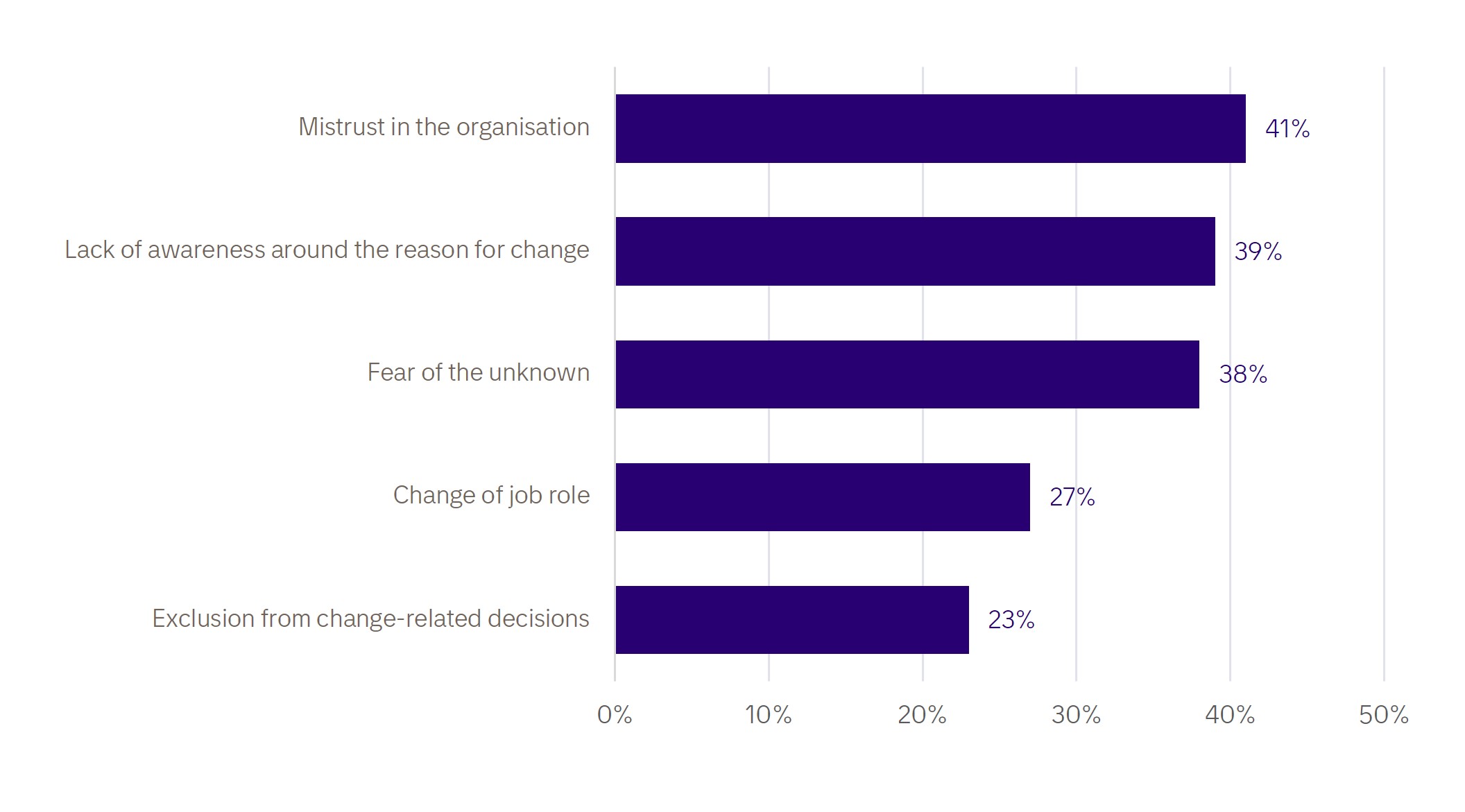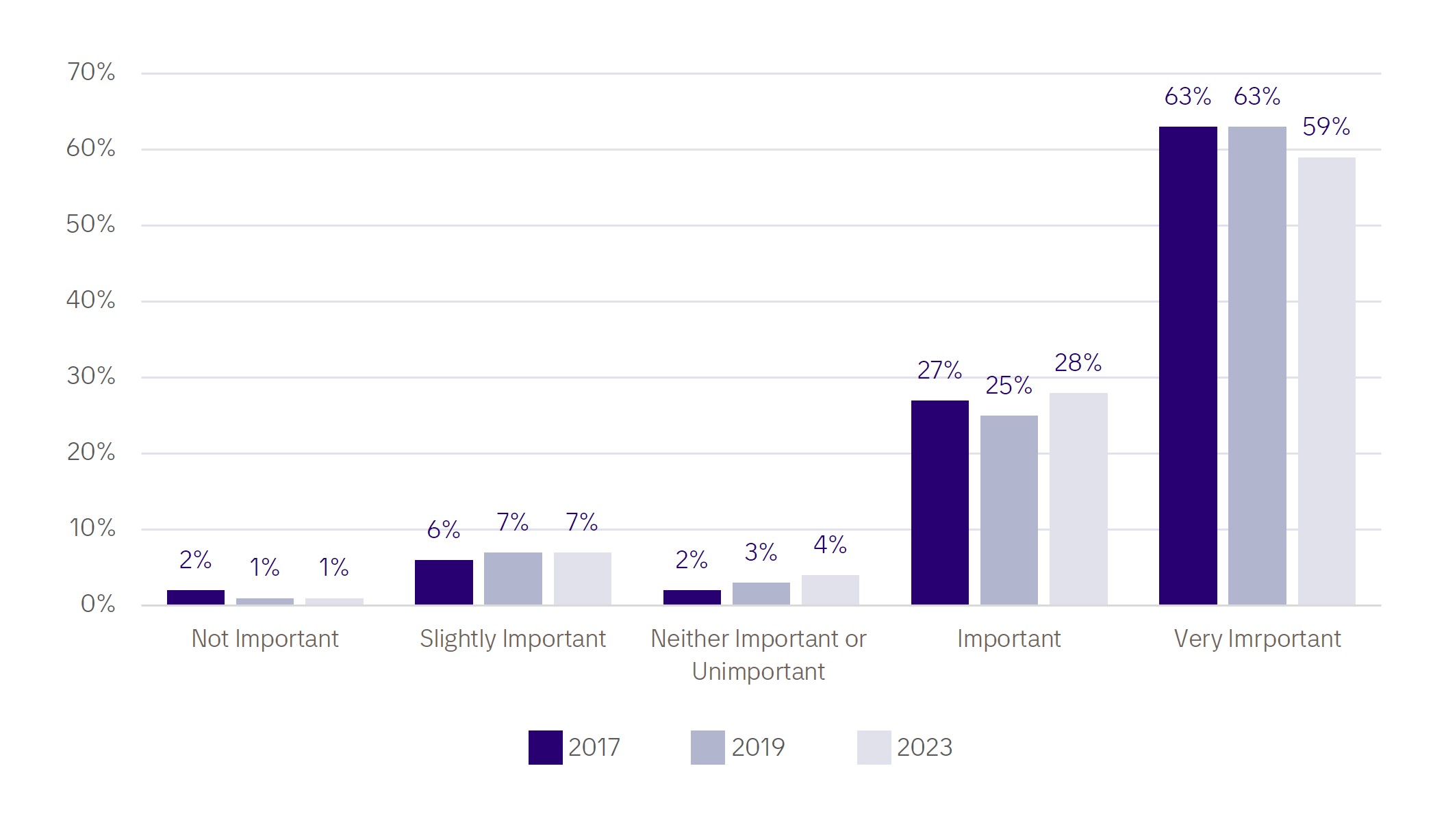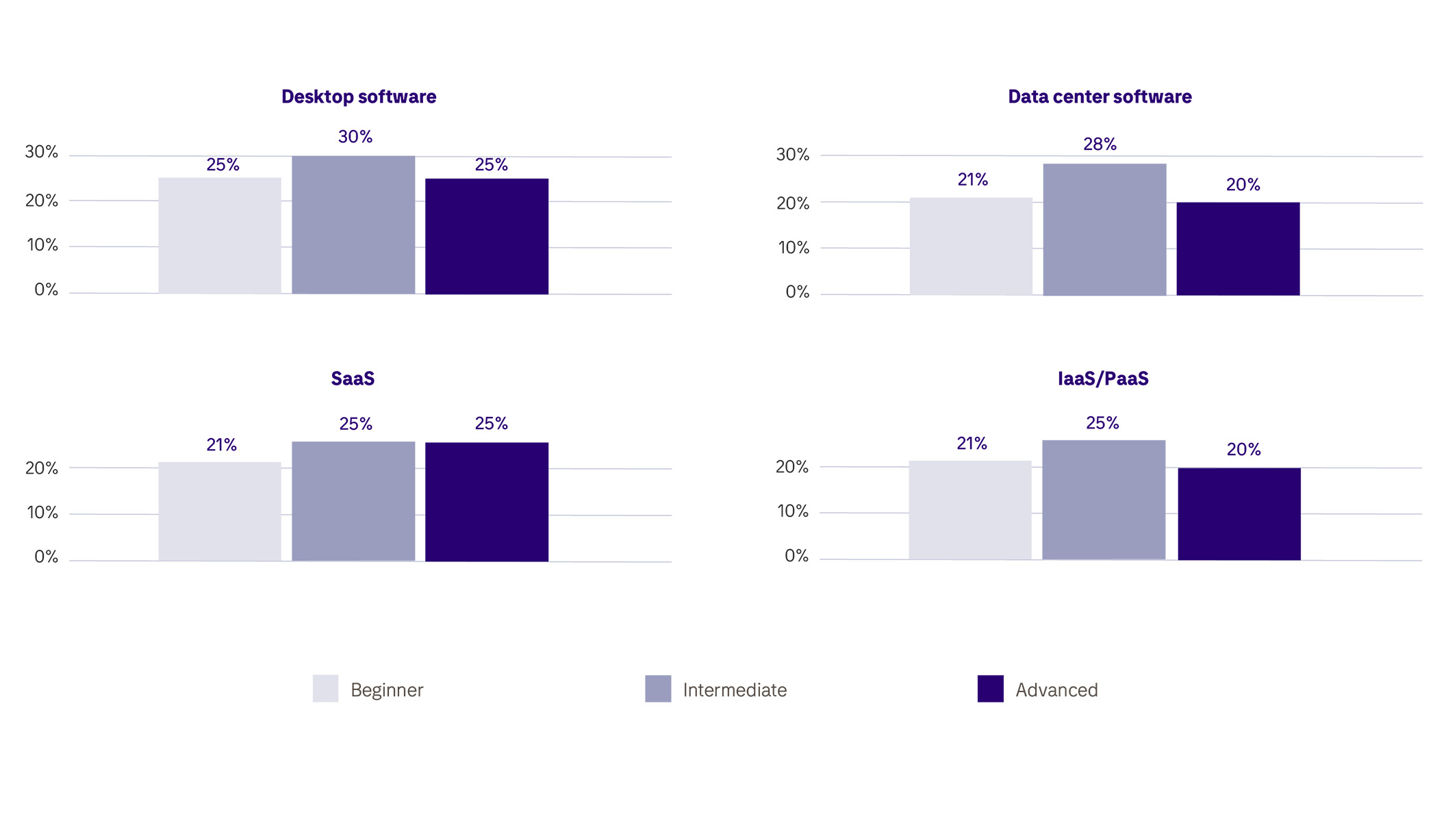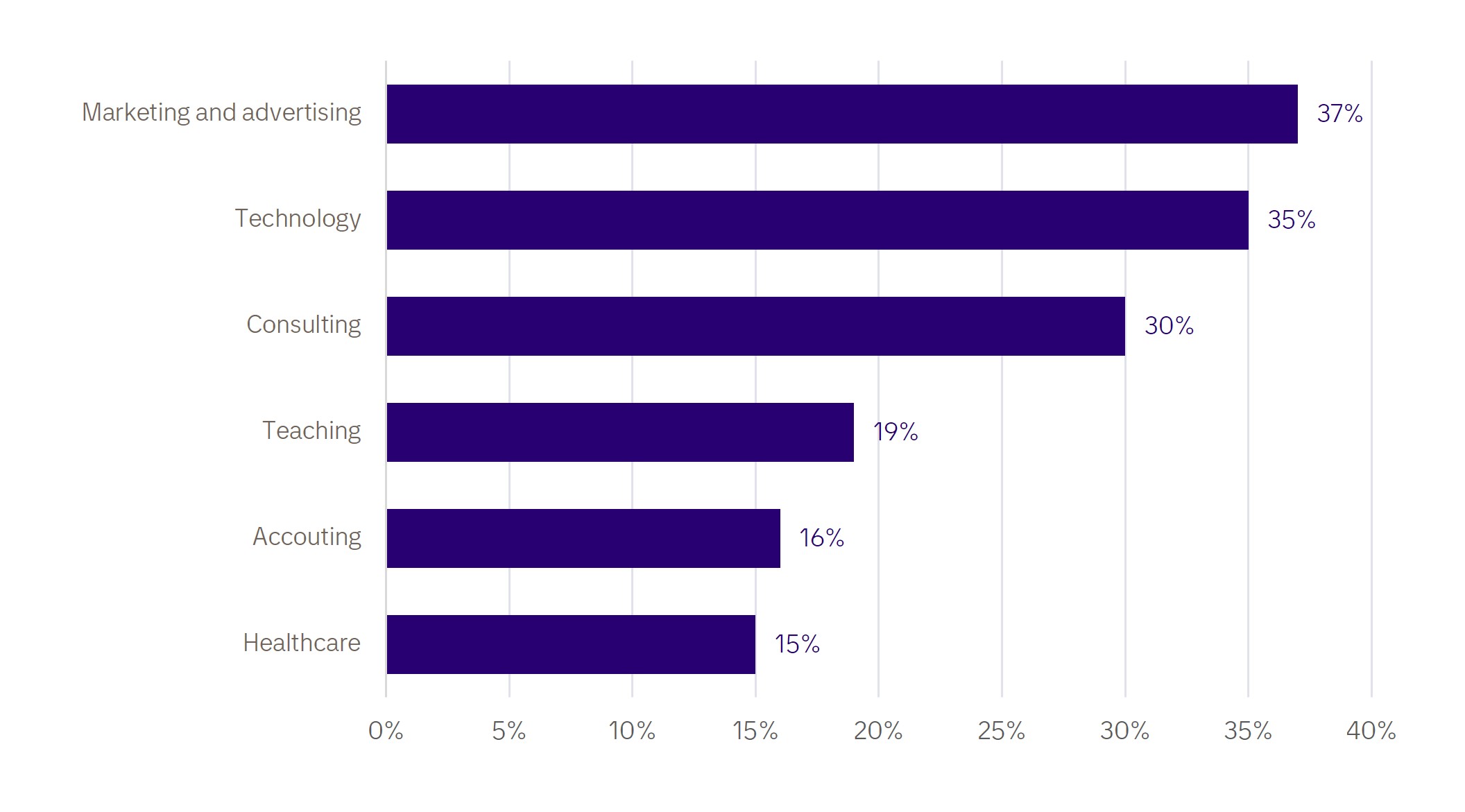
Embracing technology and adaptability through change management
Discover how to lead digital transformation with clarity, strategy, and cultural insight.
In today’s rapidly growing world, change is no longer an occasional event, but an integral part of life and business. Adaptability and the willingness to evolve have become core values for many organizations.
As digital transformation accelerates, companies are recognizing the need for employees who are not only adaptable but also willing to continuously learn new skills to stay ahead. In this environment of continuous transformation, both challenges and opportunities arise. How can organizations effectively harness the forces of change? How do you approach implementing something as broad and abstract as change? When executed without a clear roadmap, change initiatives can unintentionally generate resistance and stall progress.
That’s why partnering with third-party change management experts can be a strategic and valuable decision. A structured approach reassures the organization's leadership and employees alike that the change process is being handled with care, clarity, and purpose.
Key Challenges to Incorporating Next-Gen Tech
The integration of new technology is a double-edged sword, both a necessity and a challenge. Introducing advancements into a company’s day-to-day operations often brings significant changes to procedures, culture, and routines. Below are the most common obstacles companies face on the path to innovation.
Resistance to Change
New technology often disrupts established routines and workflows, leading to pushback from employees comfortable with existing systems. Concerns about job security, increased workload, or simply uncertainty about the future can hinder the adoption of new tools. In fact, 38% of employees cite fear of the unknown as their reason for resisting change.

Lack of Skillsets
Adopting new technology may require skills that employees currently lack. This skills gap can slow down the adoption process and lead to inefficiencies in utilizing the new tools. According to a World Economic Forum report, 67% of workers will require training and reskilling by 2030 to keep pace with the evolving workplace.
Integration Complexities
Connecting new technology with existing systems and processes can be complicated and time-consuming. Incompatibility issues, data migration challenges, and potential disruptions can arise, even when companies are eager to boost digitalization.
Cultural Shifts
New technology often requires a shift in organizational culture to align with its principles and benefits. Long-established cultural norms, an unseen yet powerful force, may fuel resistance to the adoption of technology-driven practices. That’s why 59% of change management practitioners highlight cultural awareness a as a key factor for successful change implementation.

Sustainability and Scalability
Ensuring new technology remains sustainable and scalable over time can be a challenge. Rapid technological advances, shifting business needs, and evolving market dynamics all influence the relevance and effectiveness of adopted solutions.
Robust adoption and change management strategies are essential to overcome these challenges. Driving meaningful outcomes requires careful planning and a personalized approach tailored to your organization’s unique needs. Let’s explore recommendations and best practices for successful transformation.
3 Ideas to Fuel Your Successful Transformation
Adopting New Technology = Adopting New Mindset
While the workforce plays a critical role in driving transformation, sustainable and lasting change also depends on the company’s approach. A common scenario occurs when businesses make significant investments in new technology or software, only to find their teams are not effectively utilizing it. This is unfortunate, but not uncommon. In fact, almost a third, or 25% of SaaS software spending goes underused or wasted for intermediate and advanced users according to Flexera’s State of ITAM 2025 report.

Organizations typically invest in new technology expecting improved productivity, streamlined processes, or enhanced competitive advantage. Yet, the success of any technological implementation depends largely on how well employees brace these tools. Often, companies overlook the human element of change and underestimate its impact on technology initiatives.
Supporting technology implementation with clear, ongoing educational dialogue can transform caution and reluctant engagement into acceptance and excitement about new tools and the skills that come with it. This is possible to achieve with a clear strategy from executive leadership to anchor the change and personalized messages from people partners to manage expectations.
Prosci reports that 58% of employees prefer to receive communication about the upcoming and ongoing changes that impact them personally from their direct managers. Company-wide communication, however, remains important too – 37% expect to hear from the leadership.
One of the main reasons employees hesitate to adopt new technology is a natural human resistance to change. After all, why switch to something new when existing systems feel familiar and comfortable? To address these challenges, change management consultants use a variety of strategies designed to ease the transition.
- They conduct thorough assessments to understand the organization's culture, values, and objectives.
- They communicate the rationale behind the technology investment through messages formatted to different user groups.
- They highlight the potential advantages for employees, such as increased efficiency, reduced workload, and strengthened collaboration.
When adoption strategies are applied thoughtfully and at the right time, they can help cultivate an environment of continuous learning. Through these strategic interventions, change management experts break down the barriers of employee resistance, boost cultural evolution, and foster a genuine embrace of new developments.
Change Management Art: Discovering the Right Approach
Change management methodologies and frameworks vary greatly and must be tailored to a company’s unique needs, goals, and challenges. Depending on community morale, corporate values, and the novelty of what’s being introduced, adoption management consultants apply different models and techniques.
Some common tools in the change management arsenal include:
- Training programs
- Interactive workshops
- Coaching sessions
- Feedback loops
- User forums and collaborative learning
- Knowledge-sharing platforms
- and other specialized tactics depending on the situation.
Another critical aspect of the process is ongoing monitoring and evaluation. Change management consultants collect feedback from employees, track usage metrics, and identify any bottlenecks that require attention. Based on these insights, they refine agile change strategies and provide recommendations to optimize the implementation process.
Deloitte researchers discovered that top-performing companies are 3.5 times more inclined to leverage data to guide their change initiatives, and 4 times more likely to seek input from their workers while shaping those transformative changes. It’s a reminder that meaningful transformation is rarely top-down but built through shared input and collaboration.
Case in point. When weighing the possibility of low-code adoption, a leading agriculture company asked Infopulse, part of Tietoevry Create, to test Microsoft Power Apps low-code platform and assess their implementation readiness. Tietoevry Create organized a workshop for the client’s team and showcased Power Apps capabilities with a tailored MVP of a field workers app. As a result, the client committed to a full-scale Power Apps adoption in their organization.
Inward Momentum: All the Power to Power Users
Methodologies, tools, and techniques fuel adoption, but true momentum often starts from within. That’s the behind the change management tactic of Power Users or Change Agents. Power users are individuals within an organization who have strong knowledge of the new technology or software and become early advocates for its adoption. They are enthusiastic supporters for change and serve as role models for their peers.
Once identified, these Power Users form a network of Change Agents that acts as a support system and encourages a collective effort in driving change. This group communicates through regular meetings, virtual collaborations, or specialized platforms, fostering a sense of community and collaboration.
Change management consultants typically help identify Change Agents by selecting Power Users from across departments. As the organization evolves, the mantra "change starts from within" becomes more than just a slogan. It becomes a guiding principle that paves the way for future growth and resilience.
The Most Discussed Disruptive Change and What to Do About It
While underused software licenses and resistance to new platform migration remain common concerns, a much larger shift is taking place – one that’s faster, smarter, and impossible to ignore: artificial intelligence.
Generative AI, exemplified by technologies like ChatGPT, is rapidly transforming the business landscape. Its applications span everything from customer service and content creation to decision-making processes.
These intelligent tools go far beyond automating manual tasks. They’re generating stories, songs, computer code, and sales presentations in seconds. According to Gartner's projections, by 2025, an impressive 30% of outbound marketing messages from large organizations will be generated by AI, up from just 2% in 2022. Even more striking are the predictions for the film industry that suggest that by 2030, 90% of text and video content could be created entirely by AI.
Generative AI adoption rates in the United States workplace by industry in 2023

The rapid rise of AI systems can be likened to a star being born, sending ripples of transformation across every industry. As generative AI technologies become mainstream, organizations face growing pressure to integrate these systems into their operations.
In this era of real-time learning and adaptive algorithms, enterprises must navigate the intricacies of change management with precision. The goal is to ease the transition, alleviate resistance, and cultivate a culture where change is not seen as an obstacle, but as an opportunity.
Final Thoughts
In today’s fast-paced, tech-driven landscape, organizations that prioritize adoption and change management strategies are poised to reap the rewards of a successful transition.
Among the most-discussed disruptive change on the horizon, generative AI stands out. Not just for its capabilities, but for the holistic approach and organizational shift it demands. Embracing AI goes beyond merely adopting new tools; it calls for a complete a shift in organizational mindset. Leaders must recognize AI as a powerful ally rather than a replacement, and employees must embrace AI as a partner in driving innovation and efficiency.
As the stars of next-generation technology align, the organizations that approach change with strategy, adaptability, and foresight will be the ones shining brightest in the future.
Contact us for expert assistance in managing change and adoption for your migration, implementation, and integration.


